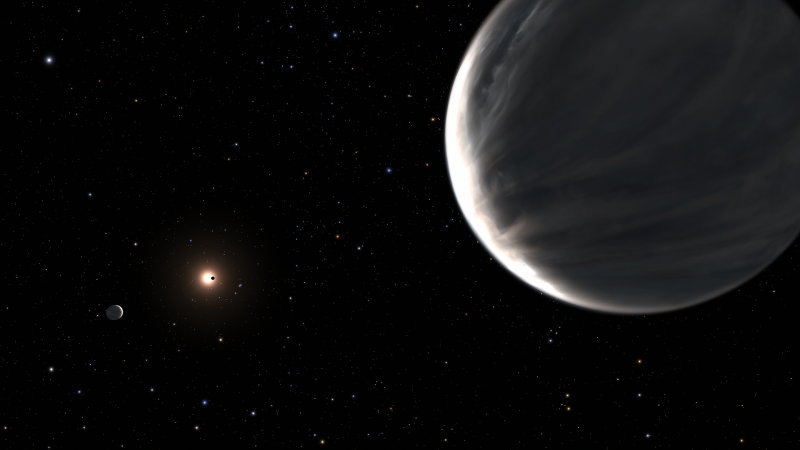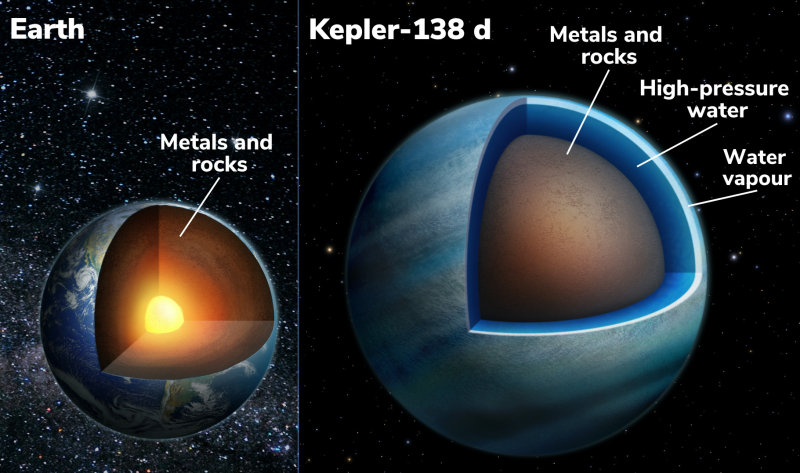
The Kepler-138 system (Artwork, NASA)
This stellar system has two very unusual planets in it. For many decades, science ficiton writies have speculated that there exist in the universe worlds that like the Earth, but which are covered in oceans so deep that there are no land masses at all. See Star Wars and Star Trek Voyager, also, for visulaisaitons. Sad to say, we cannot actually see these worlds for what they are. To do that would require a telescope with an effective aperture as large as Earth's orbit, or larger. Instead, the existence of these waterworlds is deduced from their densities, which can be calcualted from the pull exerted by the planet on its star and on the size estimated from the brightness, or length of occultation, if its orbital plane crosses the star in our line of sight.
Kepler-138c and Kepler-138d are determined to be water worlds, due to their low density for their sizes. Kepler-138b is a mars-sized world and is only remarkable for being the smallest exo-planet detected, so far, with a mass of 0.07 of the Earth and diameter of around 50% of the Earth. It orbits the red dwarf Kepler-138 in around 10 days. There is also Kepler-138 e, which does not seem to transit the star and has an orbital period of 38 days. Kepler-138 c and d are inwards of the star's habital zoe, which is to say that they are hot. and their oceans will be providing most, if not all, of their atmospheres. There is a possibility that there will be supercritical water, which will mean that one or both of them don't have a definite surface, just an increase in density on descending through the atmosphere.

Comparison of a water world with the Earth (NASA)
The above information is gathered from the NASA website for the Hubble telescope. however, the new James Webb Space Telescope will, almost certainly, be able to settle the question of whether we are looking at waterworlds or not. That is because it makes its observations at infra-red wavelengths, and so the infrared absorption of water will, surely, be visible. That will will be a really exciting observation.